|
If you can believe it, this is my 3,000th blog post. What better way to mark this milestone than with an episode of a cable TV pseudohistory show featuring ancient astronauts, lost civilizations, Nephilim, the occult, and glowing descriptions of Nazis? It’s everything we have criticized and debunked over the past ten years in capsule form.
25 Comments
After two weeks of near record-low timeslot ratings for Rob Riggle: Global Investigator, the Discovery Channel pulled the show from its desirable Sunday timeslot and benched it until next month. The show will return on Thursday nights in April to burn off the remainder of its season. The misbegotten series wasn’t funny enough for comedy fans, and it offered nothing new to fans of fake history, putting it in the uncomfortable position of alienating two audiences at the same time.
Mysteries of the Tayos Caves: Lost Civilizations Where the Andes Meet the Amazon Alex Chionetti | Bear & Company | Dec. 2019 | 272 pages | ISBN: 9781591433569 | $20 Publishers don’t share all of their new books with me, so I don’t always get to read all of the books that might be relevant to this blog before they are published. Ever since Andrew Collins complained that I gave one of his books a negative review prior to publication, Inner Traditions, one of the biggest purveyors of pseudohistory and New Age claptrap in the publishing industry, has stopped making available for review their books on themes related to archaeology and ancient history prior to publication, presumably to stop me from reviewing them. Therefore, I had to wait to read a new book published last month by Bear & Company, a division of Inner Traditions. The book is called Mysteries of the Tayos Caves by Alex Chionetti, and it deserves notice for two reasons: First, because of who Chionetti is and second, because of who endorsed his book. The actual content of the book is nothing you haven’t seen before on Ancient Aliens and Expedition Unknown, and for good reason, as we shall see.
Perhaps more than any year in recent memory, 2019 was the year in which fringe history stopped being fringe and went completely mainstream. This year, we saw pseudohistory and conspiracy theories top the literary bestseller lists, multiply across cable channels like mushrooms on a rotten log, and attract record crowds to traveling carnivals masquerading as pseudohistory “fan” conventions. It perfectly captures the tenor of the times for the post-truth era that the very notions of fact and fiction ceased to have meaning. This was a long, hard year, both for the world and also for me personally. After dealing with family health problems, buying and selling a house (and still not being able to close on selling the old one until early 2020, nearly half a year after the sale), writing two books, and a knot of lawyers for many different developments, I am ready for this unpleasant year to end. Let’s look back in anger:
In this month's edition of The SAA Archaeological Record, a publication of the Society for American Archaeology, there is a special section organized by John Hoopes in which a number of authors, including several friends of this blog and me, have pieces examining aspects of Graham Hancock's America Before, pseudoarchaeology, and popular understandings of the past. My piece focuses on racism and the Mound Builder myth, in anticipation of my forthcoming book on the subject. The special edition can be read for free in its entirety here, and my piece also appears on my website by permission of the SAA. In lieu of a lengthy post today, please enjoy my article.
Originally, I planned to spend today’s blog post discussing Tom DeLonge’s recent interview in the British music magazine NME, in which he claimed to have secret knowledge that he has adjudged too dangerous for public consumption: “Believe it or not, we have very long conversations about what we’re going to talk about publicly, not because we don’t have the facts – but because people aren’t ready for the facts,” he said. This seems transparently false. If an aging rock star whose sum total of knowledge of UFOs, ancient history, and the occult is derived, by his own admission, from reading old paperback ufology books has experienced “the facts” and emerged unscathed, surely we mere mortals can hear whatever it is DeLonge thinks he knows (but probably doesn’t). I also thought it worth mentioning that Luis Elizondo, who two Pentagon spokespeople have denied served as the head of the Pentagon’s UFO tracking program, declined to provide evidence that he did head it when asked. “I don’t want to make anyone look foolish,” he said. Sure, that’s the reason.
If you are a subscriber to Science magazine, you may have seen Lizzie Wade’s article “Believe in Atlantis? These Archaeologists Want to Win You Back to Science,” which ran online on Tuesday and will appear in the print version of the journal. The article features a number of archaeologists that regular readers of this blog will be familiar with and (I hope) fans of, as well as a few comments from me, too. In lieu of a blog post today, I urge to you give Wade’s article a read. In it, she discusses the continued popularity of pseudoarchaeology and its dominance in popular culture. It covers the racism of pseudoarchaeology and its connections to nineteenth century colonialism and imperialism.
On Wednesday, Full Frontal with Samantha Bee sent the Lucas Brothers to the Metropolitan Museum of Art to examine why the Alt-Right is obsessed with Greco-Roman statues. The brothers and their team of experts concluded that the white marble of the statues has falsely created a culture of white supremacy around the sculptures which the Alt-Right is exploiting for political gain. This is stupid, and as much as I like Samantha Bee and her show, this segment was flawed, predicated on the facile conflation of the color white with the social construction of Whiteness.
Instead of writing a lengthy blog post today, I’d like to recommend that you read “Hunting Dinosaurs in Central Africa,” an excellent article in Contingent Magazine by Edward Guimont discussing the close connection between pseudohistory, cryptozoology, and colonialism in Central Africa from early colonial era down to the present. Guimont discusses how Europeans attempted to assert control over Africa by rewriting its history through a Biblical lens but also through appropriating control over its animals. As Guimont explains, such seemingly disparate phenomena as hunting for King Solomon’s mines, looking for dinosaurs in the Congo, and displaying African wildlife in European capitals were actually part of a single colonial enterprise to delegitimize African cultures and knowledge and assert European dominance. To this end, the entire language of “discovery” and “exploration” inherently referred to European penetration of lands viewed as inherently wild and primitive, whose inferior peoples were ignorant and whose presence and knowledge were unacknowledged and unvalued.
|
AuthorI am an author and researcher focusing on pop culture, science, and history. Bylines: New Republic, Esquire, Slate, etc. There's more about me in the About Jason tab. Newsletters
Enter your email below to subscribe to my newsletter for updates on my latest projects, blog posts, and activities, and subscribe to Culture & Curiosities, my Substack newsletter.
Categories
All
Terms & ConditionsPlease read all applicable terms and conditions before posting a comment on this blog. Posting a comment constitutes your agreement to abide by the terms and conditions linked herein.
Archives
April 2024
|
- Home
- Blog
- Books
-
Articles
-
Newsletter
>
- Television Reviews >
- Book Reviews
- Galleries >
- Videos
-
Collection: Ancient Alien Fraud
>
- Chariots of the Gods at 50
- Secret History of Ancient Astronauts
- Of Atlantis and Aliens
- Aliens and Ancient Texts
- Profiles in Ancient Astronautics >
- Blunders in the Sky
- The Case of the False Quotes
- Alternative Authors' Quote Fraud
- David Childress & the Aliens
- Faking Ancient Art in Uzbekistan
- Intimations of Persecution
- Zecharia Sitchin's World
- Jesus' Alien Ancestors?
- Extraterrestrial Evolution?
- Collection: Skeptic Magazine >
- Collection: Ancient History >
- Collection: The Lovecraft Legacy >
- Collection: UFOs >
- Scholomance: The Devil's School
- Prehistory of Chupacabra
- The Templars, the Holy Grail, & Henry Sinclair
- Magicians of the Gods Review
- The Curse of the Pharaohs
- The Antediluvian Pyramid Myth
- Whitewashing American Prehistory
- James Dean's Cursed Porsche
-
Newsletter
>
-
The Library
-
Ancient Mysteries
>
-
Ancient Texts
>
- Mesopotamian Texts >
-
Egyptian Texts
>
- The Shipwrecked Sailor
- Dream Stela of Thutmose IV
- The Papyrus of Ani
- Classical Accounts of the Pyramids
- Inventory Stela
- Manetho
- Eratosthenes' King List
- The Story of Setna
- Leon of Pella
- Diodorus on Egyptian History
- On Isis and Osiris
- Famine Stela
- Old Egyptian Chronicle
- The Book of Sothis
- Horapollo
- Al-Maqrizi's King List
- Teshub and the Dragon
- Hermetica >
- Hesiod's Theogony
- Periplus of Hanno
- Ctesias' Indica
- Sanchuniathon
- Sima Qian
- Syncellus's Enoch Fragments
- The Book of Enoch
- Slavonic Enoch
- Sepher Yetzirah
- Tacitus' Germania
- De Dea Syria
- Aelian's Various Histories
- Julius Africanus' Chronography
- Eusebius' Chronicle
- Chinese Accounts of Rome
- Ancient Chinese Automaton
- The Orphic Argonautica
- Fragments of Panodorus
- Annianus on the Watchers
- The Watchers and Antediluvian Wisdom
-
Medieval Texts
>
- Medieval Legends of Ancient Egypt >
- The Hunt for Noah's Ark
- Isidore of Seville
- Book of Liang: Fusang
- Agobard on Magonia
- Book of Thousands
- Voyage of Saint Brendan
- Power of Art and of Nature
- Travels of Sir John Mandeville
- Yazidi Revelation and Black Book
- Al-Biruni on the Great Flood
- Voyage of the Zeno Brothers
- The Kensington Runestone (Hoax)
- Islamic Discovery of America
- The Aztec Creation Myth
-
Lost Civilizations
>
-
Atlantis
>
- Plato's Atlantis Dialogues >
- Fragments on Atlantis
- Panchaea: The Other Atlantis
- Eumalos on Atlantis (Hoax)
- Gómara on Atlantis
- Sardinia and Atlantis
- Santorini and Atlantis
- The Mound Builders and Atlantis
- Donnelly's Atlantis
- Atlantis in Morocco
- Atlantis and the Sea Peoples
- W. Scott-Elliot >
- The Lost Atlantis
- Atlantis in Africa
- How I Found Atlantis (Hoax)
- Termier on Atlantis
- The Critias and Minoan Crete
- Rebuttal to Termier
- Further Responses to Termier
- Flinders Petrie on Atlantis
- Amazing New Light (Hoax)
- Lost Cities >
- OOPARTs
- Oronteus Finaeus Antarctica Map
- Caucasians in Panama
- Jefferson's Excavation
- Fictitious Discoveries in America
- Against Diffusionism
- Tunnels Under Peru
- The Parahyba Inscription (Hoax)
- Mound Builders
- Gunung Padang
- Tales of Enchanted Islands
- The 1907 Ancient World Map Hoax
- The 1909 Grand Canyon Hoax
- The Interglacial Period
- Solving Oak Island
-
Atlantis
>
- Religious Conspiracies >
-
Giants in the Earth
>
-
Fossil Origins of Myths
>
- Fossil Teeth and Bones of Elephants
- Fossil Elephants
- Fossil Bones of Teutobochus
- Fossil Mammoths and Giants
- Giants' Bones Dug Out of the Earth
- Fossils and the Supernatural
- Fossils, Myth, and Pseudo-History
- Man During the Stone Age
- Fossil Bones and Giants
- Mastodon, Mammoth, and Man
- American Elephant Myths
- The Mammoth and the Flood
- Fossils and Myth
- Fossil Origin of the Cyclops
- History of Paleontology
- Fragments on Giants
- Manichaean Book of Giants
- Geoffrey on British Giants
- Alfonso X's Hermetic History of Giants
- Boccaccio and the Fossil 'Giant'
- Book of Howth
- Purchas His Pilgrimage
- Edmond Temple's 1827 Giant Investigation
- The Giants of Sardinia
- Giants and the Sons of God
- The Magnetism of Evil
- Tertiary Giants
- Smithsonian Giant Reports
- Early American Giants
- The Giant of Coahuila
- Jewish Encyclopedia on Giants
- Index of Giants
- Newspaper Accounts of Giants
- Lanier's A Book of Giants
-
Fossil Origins of Myths
>
-
Science and History
>
- Halley on Noah's Comet
- The Newport Tower
- Iron: The Stone from Heaven
- Ararat and the Ark
- Pyramid Facts and Fancies
- Argonauts before Homer
- The Deluge
- Crown Prince Rudolf on the Pyramids
- Old Mythology in New Apparel
- Blavatsky on Dinosaurs
- Teddy Roosevelt on Bigfoot
- Devil Worship in France
- Maspero's Review of Akhbar al-zaman
- The Holy Grail as Lucifer's Crown Jewel
- The Mutinous Sea
- The Rock Wall of Rockwall
- Fabulous Zoology
- The Origins of Talos
- Mexican Mythology
- Chinese Pyramids
- Maqrizi's Names of the Pharaohs
-
Extreme History
>
- Roman Empire Hoax
- American Antiquities
- American Cataclysms
- England, the Remnant of Judah
- Historical Chronology of the Mexicans
- Maspero on the Predynastic Sphinx
- Vestiges of the Mayas
- Ragnarok: The Age of Fire and Gravel
- Origins of the Egyptian People
- The Secret Doctrine >
- Phoenicians in America
- The Electric Ark
- Traces of European Influence
- Prince Henry Sinclair
- Pyramid Prophecies
- Templars of Ancient Mexico
- Chronology and the "Riddle of the Sphinx"
- The Faith of Ancient Egypt
- Remarkable Discoveries Within the Sphinx (Hoax)
- Spirit of the Hour in Archaeology
- Book of the Damned
- Great Pyramid As Noah's Ark
- Richard Shaver's Proofs
-
Ancient Texts
>
-
Alien Encounters
>
-
US Government Ancient Astronaut Files
>
- Fortean Society and Columbus
- Inquiry into Shaver and Palmer
- The Skyfort Document
- Whirling Wheels
- Denver Ancient Astronaut Lecture
- Soviet Search for Lemuria
- Visitors from Outer Space
- Unidentified Flying Objects (Abstract)
- "Flying Saucers"? They're a Myth
- UFO Hypothesis Survival Questions
- Air Force Academy UFO Textbook
- The Condon Report on Ancient Astronauts
- Atlantis Discovery Telegrams
- Ancient Astronaut Society Telegram
- Noah's Ark Cables
- The Von Daniken Letter
- CIA Psychic Probe of Ancient Mars
- Scott Wolter Lawsuit
- UFOs in Ancient China
- CIA Report on Noah's Ark
- CIA Noah's Ark Memos
- Congressional Ancient Aliens Testimony
- Ancient Astronaut and Nibiru Email
- Congressional Ancient Mars Hearing
- House UFO Hearing
- Ancient Extraterrestrials >
- A Message from Mars
- Saucer Mystery Solved?
- Orville Wright on UFOs
- Interdimensional Flying Saucers
- Flying Saucers Are Real
- Report on UFOs
-
US Government Ancient Astronaut Files
>
-
The Supernatural
>
- The Devils of Loudun
- Sublime and Beautiful
- Voltaire on Vampires
- Demonology and Witchcraft
- Thaumaturgia
- Bulgarian Vampires
- Religion and Evolution
- Transylvanian Superstitions
- Defining a Zombie
- Dread of the Supernatural
- Vampires
- Werewolves and Vampires and Ghouls
- Science and Fairy Stories
- The Cursed Car
-
Classic Fiction
>
- Lucian's True History
- Some Words with a Mummy
- The Coming Race
- King Solomon's Mines
- An Inhabitant of Carcosa
- The Xipéhuz
- Lot No. 249
- The Novel of the Black Seal
- The Island of Doctor Moreau
- Pharaoh's Curse
- Edison's Conquest of Mars
- The Lost Continent
- Count Magnus
- The Mysterious Stranger
- The Wendigo
- Sredni Vashtar
- The Lost World
- The Red One
- H. P. Lovecraft >
- The Skeptical Poltergeist
- The Corpse on the Grating
- The Second Satellite
- Queen of the Black Coast
- A Martian Odyssey
- Classic Genre Movies
-
Miscellaneous Documents
>
- The Balloon-Hoax
- A Problem in Greek Ethics
- The Migration of Symbols
- The Gospel of Intensity
- De Profundis
- The Life and Death of Crown Prince Rudolf
- The Bathtub Hoax
- Crown Prince Rudolf's Letters
- Position of Viking Women
- Employment of Homosexuals
- James Dean's Scrapbook
- James Dean's Love Letters
- The Amazing James Dean Hoax!
- James Dean, The Human Ashtray
- Free Classic Pseudohistory eBooks
-
Ancient Mysteries
>
- About Jason
- Search
© 2010-2024 Jason Colavito. All rights reserved.


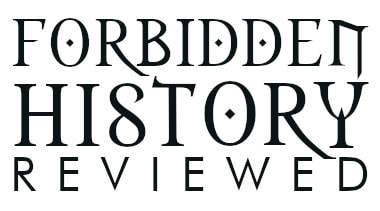

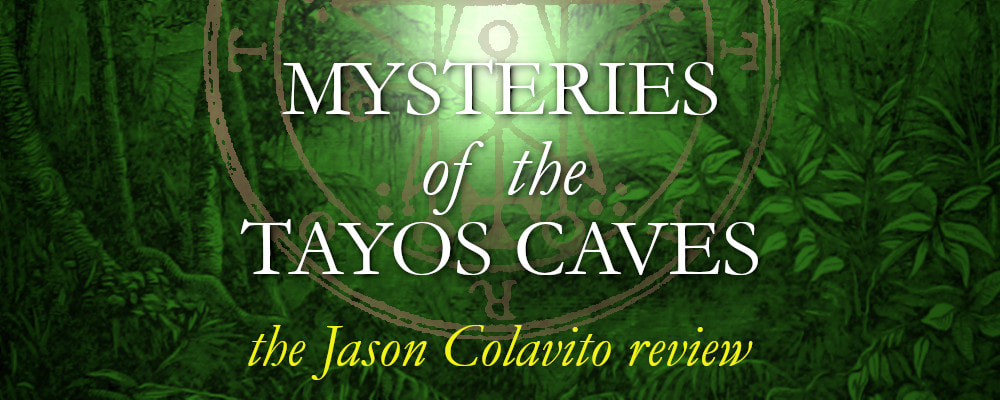

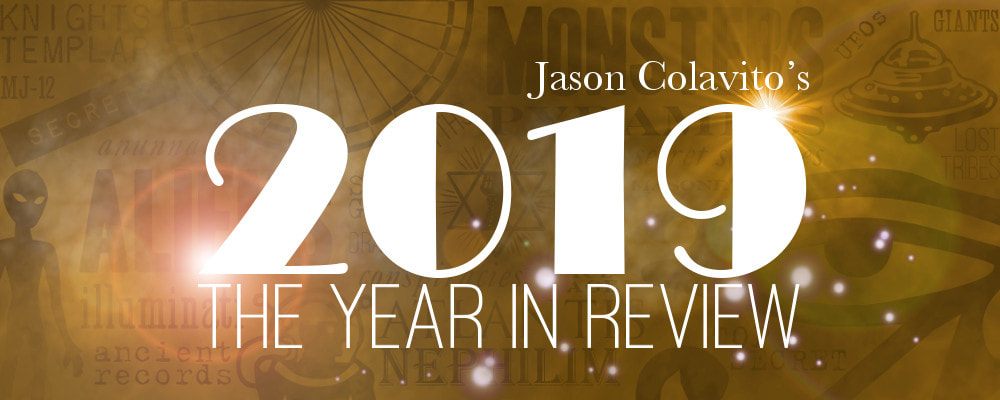

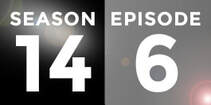
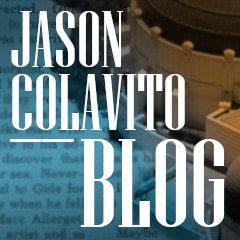

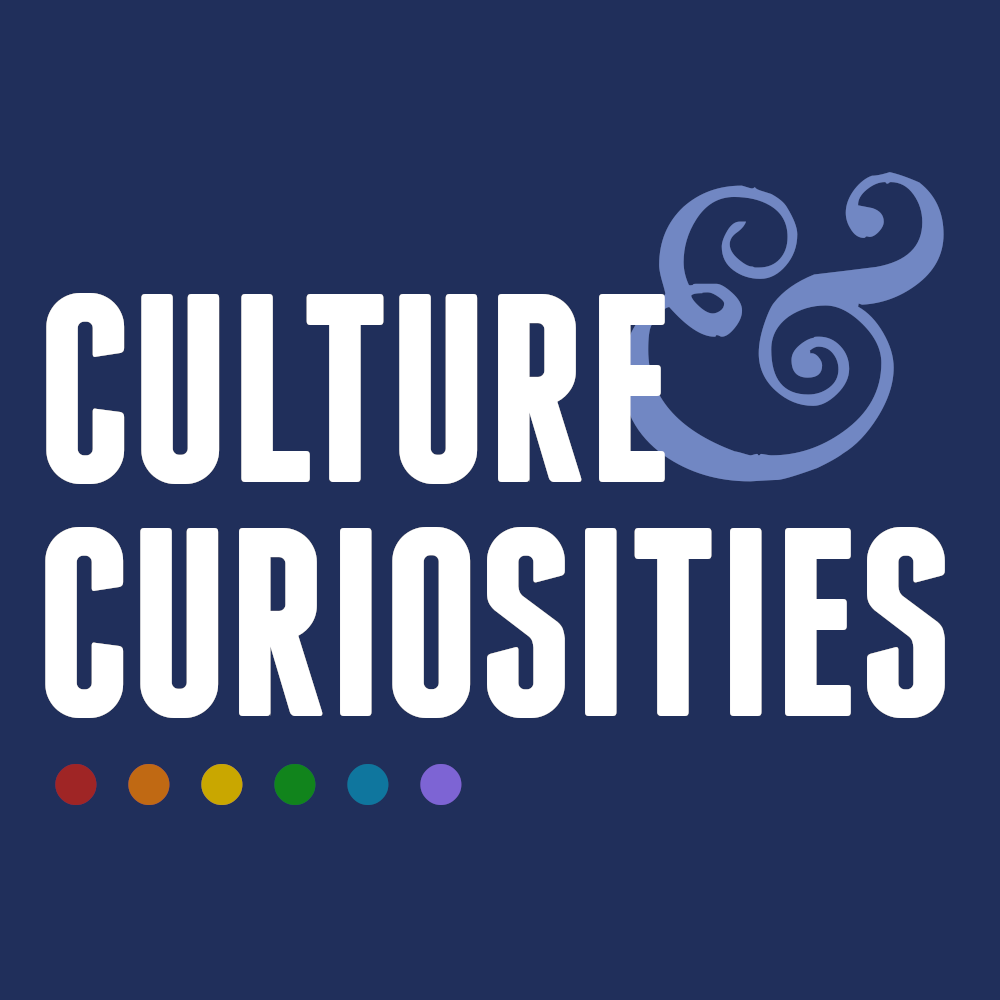
 RSS Feed
RSS Feed
